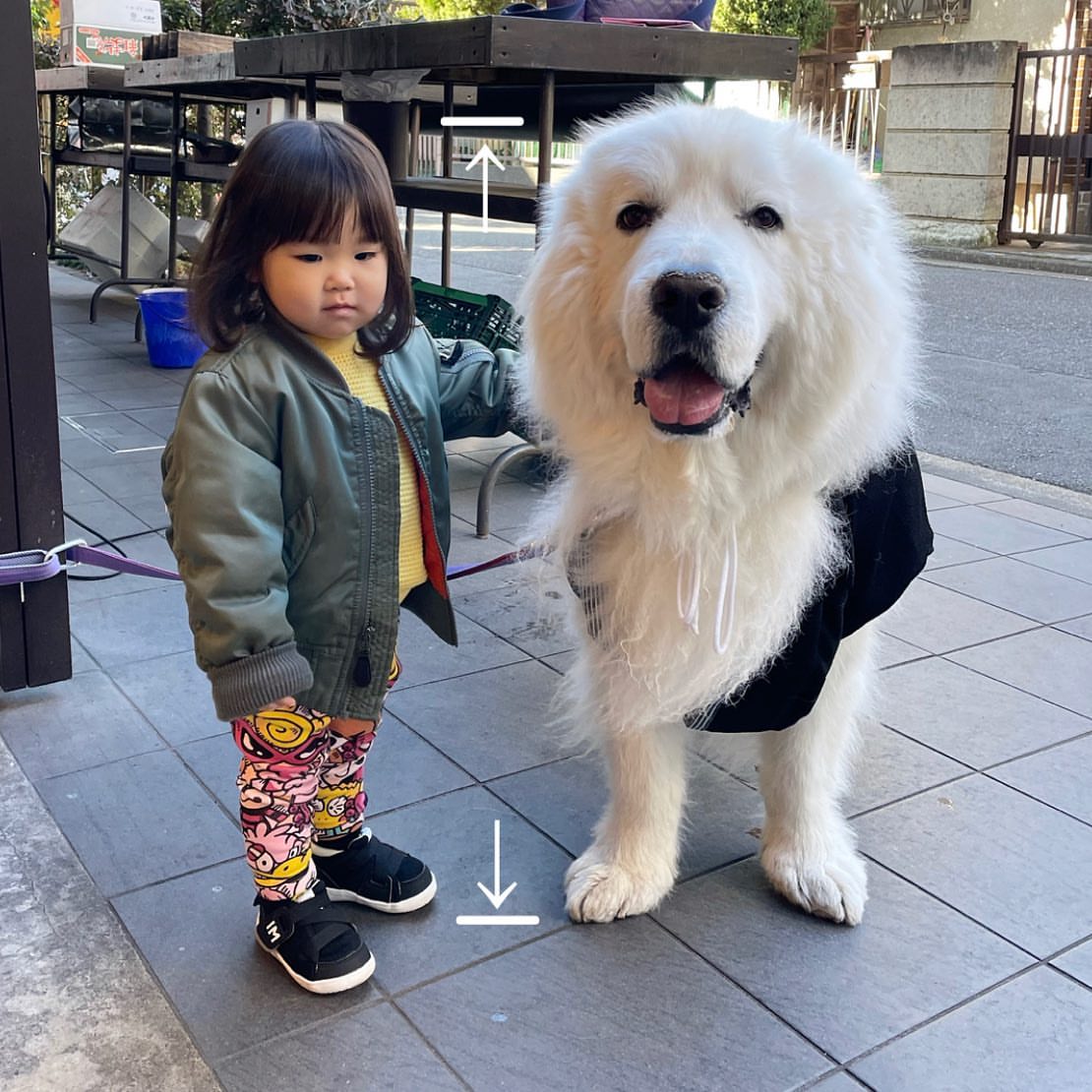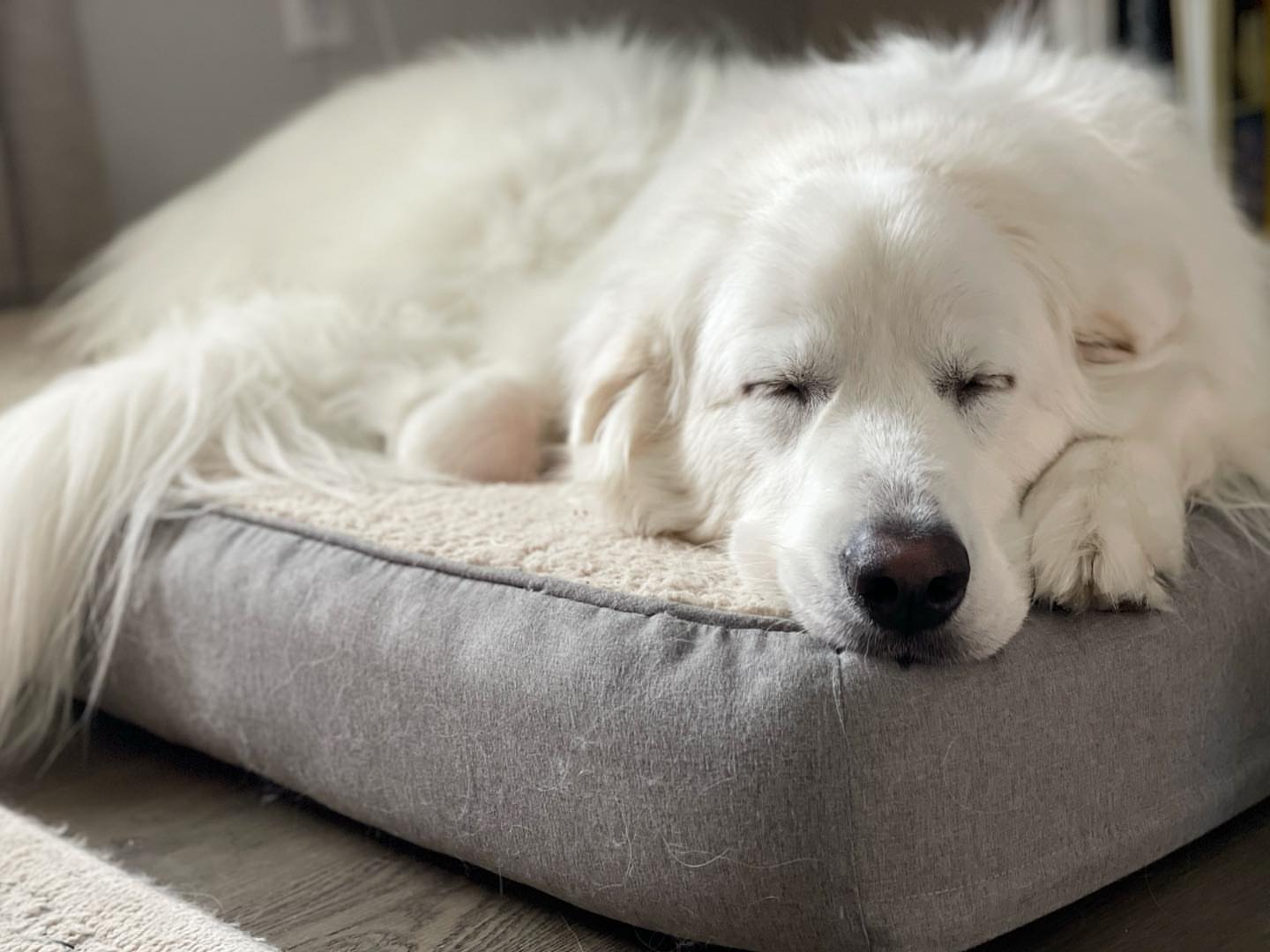Great Pyrenees Breed Information
The Great Pyrenees large dog is muscular in build. A male adult weighs between 100 and 150 pounds, while a female can weigh between 85 and 120 pounds.
It is classified as a working dog and has a strong drive to work. It is fearless and has a muscular build. Also, this was why the Pyrenean shepherds loved this dog. It was able to fight off bears and wolves. It was also gentle and kind to the sheep.
Adults can reach 32 inches (2.65 ft) in length. The dog has a thick, rough coat with a woolly underneath and an overcoat thick and dense. Some dogs have gray markings, while others may have reddish-brown or brown markings. For most dogs, however, white is their dominant color. The Great Pyrenees can live for up to 12 years.

You will notice its agile feet and graceful movements. Famous for its large size and thick white coat, the Great Pyrenees canine breed is known for its calm, loyal personality. This powerful breed, also known as the Pyrenean Mountain dog, or Pyr, is named after the mountains from which it was originally a livestock guardian. This breed has a long history in Europe. It can be traced back to 3000 BC. The Marquis de Lafayette, a French soldier who fought in America’s Revolutionary War, introduced it to America in 1824. The American Kennel Club recognized the breed in 1933, more than 100 years after its introduction.
You may like: Do German Shepherds cuddle?
Great Pyrenees pros and cons
Pros
- Calm
- Be confident
- Courageous
- Gentle
- Great for kids
- Ideal for farms and rural areas
- Intelligent
- Cold weather: Thrives
- It is large and rugged, looking like a huge white bear
- Protect your horses, llamas, and chickens.
- You can find a solid territorial temperament or an easygoing temperament.
- It tends to be serious, steady, and not playful and silly
- You are content indoors, and you do moderate exercise.
Cons
- Aloof with strangers
- It isn’t easy to train
- High grooming requirements
- Heat intolerance
- Numerous health issues
- May bark a lot
- Slow to mature
- Sturdy
- Large breed dog that can take up lots of space in your home and car.
- Bored or left alone, destructiveness
- Aggression toward animals that don’t belong in his family
- A strong-willed dog needs a confident owner who can take control
- To prevent wandering, secure fencing and plenty of supervision are essential.
- Deep, booming barks
- Heavy shedding

Behavior
The Great Pyr can be described as intelligent, peaceful, and loyal. Also, they are calm in the home but can protect family members or patrol the house.
They are, however smart and can tell the difference between invited and uninvited guests.
Although they aren’t aggressive dogs, they can be intimidating by growling and barking. Great Pyrs have protective instincts that require responsibility.
Great Pyr dog breed’s were often left alone to protect their shepherd’s flock. Pyrs, as such, are more independent than the average dog.
They are independent and may not be the most loyal dog. Moreover, they enjoy being with their families and are good with children. As the Great Pyrenees can be a large dog, you must keep an eye on them. They may get too excited and could cause injury.
You may like: Canadian marble fox
Health concerns
Health issues in dogs are common for Great Pyrenees. Discuss these health concerns with your vet:
- Atypical development of the hip socket.
- Atypical formation of cartilage can cause discomfort in the joints
- Inverted eyelids
- Addison’s disease.
These health problems aside, the Great Pyrenees are known for their pain tolerance. Regularly inspect your dog and look for signs of injury or pain.
Training
The Great Pyrenees dog breed’s intelligent but can be challenging to train. This dog was bred to make their own decisions and continues to do so.
It is possible to be stubborn and strong-willed. Therefore, you must establish yourself early on in the training process as the leader. Pyrenees can get bored easily, so make sure you have fun during training sessions. This will ensure that your dog is happy and well-trained.
Socialization should be a part of training. It is essential to develop a solid emergency recall. The Pyrenees can wander freely and quickly disappear if left outside without a leash or if the leash slips off.
You may like: Australian shepherd puppy feeding chart
How to groom a Great Pyrenees
Great Pyrenees dog need very little grooming despite their thick coats. Brushing their coats once weekly for 30 minutes is sufficient to keep them tangle-free. It is crucial to brush their teeth regularly and keep their nails trimmed as necessary. They should have their ears checked regularly for infection and wax buildup.

Conclusion
The Great Pyrenees dog breed was awarded this title. This large and powerful breed has a striking appearance. Despite their size, the Pyrenees are a calm and protective breed.
It might not be the most attentive listener. It may think it has more important tasks to do than it listens. This breed is intelligent and has been protecting sheep flocks for hundreds of years. Before you bring one to your home, do your research.





